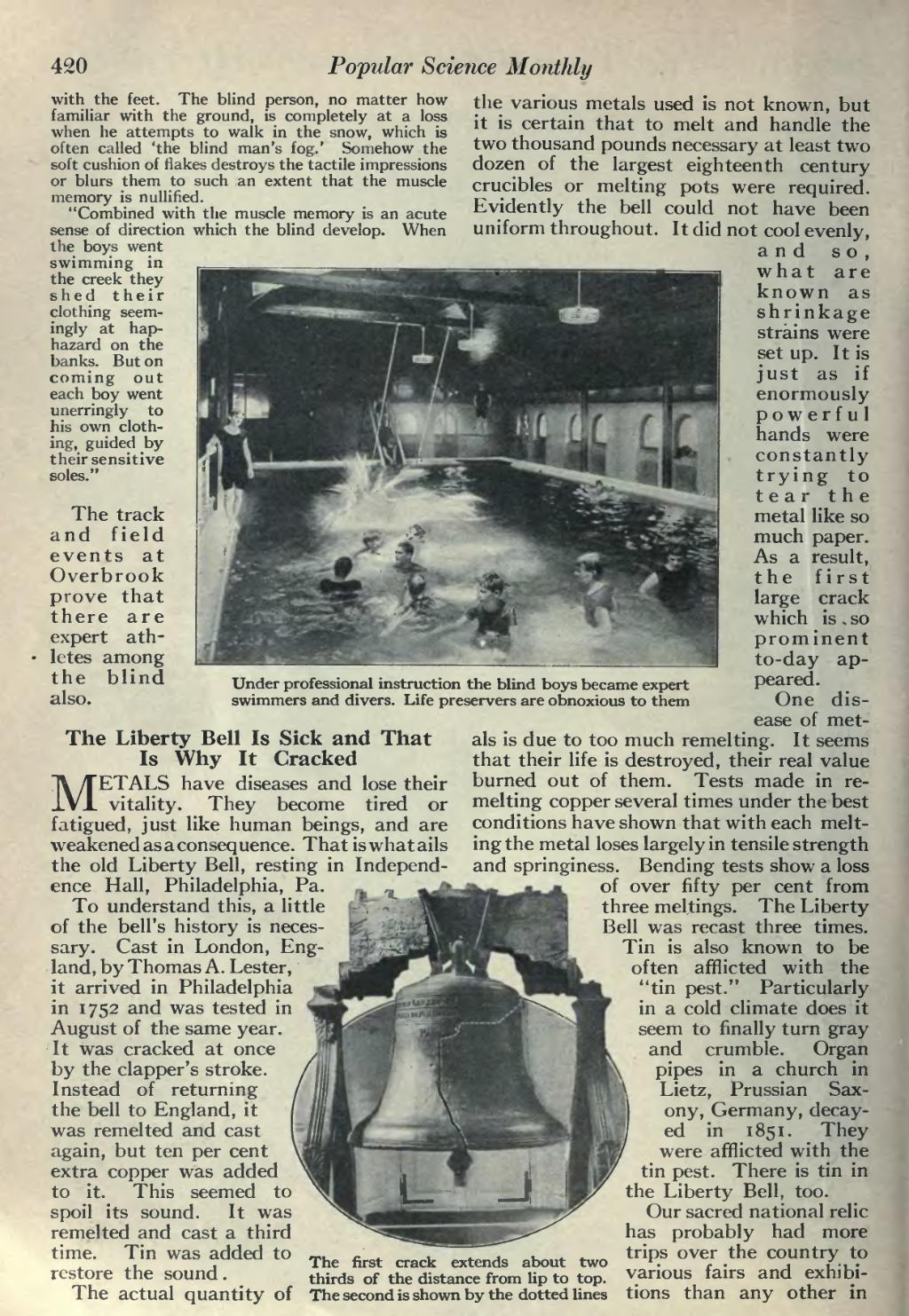420
��Popular Science Monthly
��with the feet. The blind person, no matter how familiar with the ground, is completely at a loss when he attempts to walk in the snow, which is often called 'the blind man's fog.' Somehow the soft cushion of flakes destroys the tactile impressions or blurs them to such an extent that the muscle memory is nullified.
"Combined with the muscle memory is an acute sense of direction which the blind develop. When the boys went swimming in the creek they shed their clothing seem- ingly at hap- hazard on the banks. But on coming out each boy went unerringly to his own cloth- ing, guided by their sensitive soles."
��The track and field events at Overbrook prove that there are expert ath- letes among the blind also.
���Under professional instruction the blind boys became expert swimmers and divers. Life preservers are obnoxious to them
��The Liberty Bell Is Sick and That Is Why It Cracked
METALS have diseases and lose their vitality. They become tired or fatigued, just like human beings, and are weakened as a consequence. That is what ails the old Liberty Bell, resting in Independ- ence Hall, Philadelphia, Pa
To understand this, a littk of the bell's history is neces sary. Cast in London, Eng- land, by Thomas A. Lester, it arrived in Philadelphia in 1752 and was tested in August of the same year. It was cracked at once by the clapper's stroke. Instead of returning the bell to England, it was remelted and cast again, but ten per cent extra copper was added to it. This seemed to spoil its sound. It was remelted and cast a third time. Tin was added to restore the sound .
The actual quantity of
���The first crack extends about two thirds of the distance from lip to top. The second is shown by the dotted lines
��the various metals used is not known, but it is certain that to melt and handle the two thousand pounds necessary at least two dozen of the largest eighteenth century crucibles or melting pots were required. Evidently the bell could not have been uniform throughout. It did not cool evenly,
and so, what are known as shrinkage strains were set up. It is just as if enormously powerful hands were constantly trying to tear the metal like so much paper. As a result, the first large crack which is . so prominent to-day ap- peared.
One dis- ease of met- als is due to too much remelting. It seems that their life is destroyed, their real value burned out of them. Tests made in re- melting copper several times under the best conditions have shown that with each melt- ing the metal loses largely in tensile strength and springiness. Bending tests show a loss of over fifty per cent from three meltings. The Liberty Bell was recast three times. Tin is also known to be often afiflicted with the "tin pest." Particularly in a cold climate does it seem to finally turn gray and crumble. Organ pipes in a church in Lietz, Prussian Sax- ony, Germany, decay- ed in 1 85 1. They were afiflicted with the tin pest. There is tin in the Liberty Bell, too.
Our sacred national relic has probably had more trips over the country to various fairs and exhibi- tions than any other in
�� �
